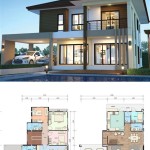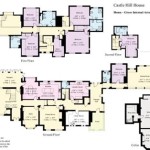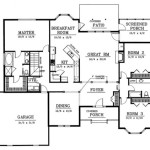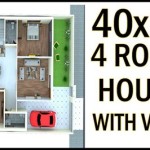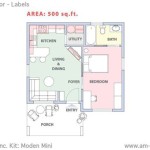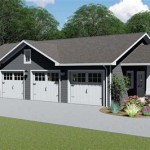```html
Exploring Canadian House Designs: A Focus on Floor Plans
Canadian house designs are a reflection of the country's diverse landscapes, climates, and cultural influences. From the rugged coastlines of the Maritimes to the vast prairies of the Midwest and the mountainous regions of British Columbia, architectural styles vary considerably. However, understanding the fundamentals of Canadian house design necessitates a close examination of the floor plans that underpin these structures. A well-designed floor plan is not simply a layout of rooms; it's the blueprint for comfortable living, energy efficiency, and adaptability to the Canadian environment.
The design choices incorporated into Canadian house floor plans often revolve around maximizing natural light, accommodating seasonal temperature fluctuations, and respecting the functional needs of modern Canadian families. These factors, coupled with evolving trends in sustainable building and accessible design, influence the arrangement of living spaces, the selection of materials, and the overall aesthetic of the home.
Key Point 1: Adaptability to Climate and Environment
Canada's diverse climate necessitates designs that are adaptable to extremes of heat and cold. Floor plans often integrate features that promote energy efficiency and comfort throughout the year. In colder regions, for example, entryways may include mudrooms or vestibules to act as airlocks, reducing heat loss and preventing drafts. Orientation of the house is also crucial, with south-facing windows maximizing solar gain during the winter months. Proper insulation and strategically placed windows are vital for reducing energy consumption for heating and cooling.
Floor plans in regions prone to heavy snowfall may prioritize covered porches and carports to provide shelter from the elements. Conversely, homes in warmer climates, like parts of British Columbia, might incorporate larger patios and outdoor living spaces to take advantage of mild weather. Materials play a crucial role, with durable, weather-resistant exteriors being paramount. The interior design complements this, often featuring natural materials that evoke a sense of warmth and connection to the landscape.
The influence of regional geography also extends to the layout of the home. In areas with limited land availability, such as urban centers, verticality becomes an important factor, leading to taller, narrower houses with multi-story floor plans. In contrast, regions with more expansive land allow for sprawling, single-story designs that prioritize horizontal space.
Key Point 2: Functional Living and Family Needs
Canadian house floor plans are designed to accommodate the evolving needs of families. Open-concept living spaces, which integrate the kitchen, dining area, and living room, are a common feature, promoting social interaction and creating a sense of spaciousness. The placement of bedrooms is also carefully considered, with master suites often located away from children's rooms for added privacy.
Dedicated spaces for work and hobbies are increasingly important in modern Canadian homes. Home offices, studios, and workshops are often incorporated into floor plans to cater to the growing trend of remote work and personal pursuits. Laundry rooms are typically located conveniently near bedrooms or on the main floor, adding to the home's overall functionality.
Furthermore, accessibility is gaining increasing attention in Canadian house design. Features such as wider doorways, ramp access, and adaptable bathrooms are becoming more common, ensuring that homes are usable for people of all ages and abilities. Universal design principles are being integrated into floor plans to create homes that are inclusive and accessible to everyone.
Storage space is also a critical component of Canadian house design. Basements, attics, and strategically placed closets are used to maximize storage capacity, particularly in homes with limited square footage. Organized storage solutions contribute to a clutter-free living environment.
The size and layout of the kitchen are also a significant consideration. Many Canadian floor plans feature large, well-equipped kitchens with ample counter space, storage, and modern appliances. The kitchen often serves as the hub of the home, where meals are prepared, families gather, and guests are entertained. Island counters, breakfast bars, and eat-in kitchens are popular features that enhance the functionality and social appeal of this space.
Key Point 3: Sustainable Design and Energy Efficiency
Sustainable building practices and energy efficiency are increasingly integrated into Canadian house designs. Floor plans are optimized to maximize natural light and ventilation, reducing the need for artificial lighting and air conditioning. The selection of building materials also plays a crucial role, with a preference for locally sourced, sustainable, and recycled materials.
Energy-efficient windows and doors, along with high levels of insulation, are essential for minimizing heat loss and reducing energy consumption. Solar panels, geothermal heating systems, and other renewable energy technologies are also being incorporated into Canadian homes to further reduce their environmental impact.
Water conservation is another important aspect of sustainable design. Floor plans may include features such as low-flow toilets, showerheads, and faucets, as well as rainwater harvesting systems for irrigation. Landscaping choices also contribute to water conservation, with drought-resistant plants and efficient irrigation techniques being favored.
The orientation of the house and the placement of windows are carefully considered to maximize solar gain during the winter months and minimize heat gain during the summer months. Overhangs and shading devices are used to protect windows from direct sunlight, further reducing the need for air conditioning. Green roofs and other landscaping features can also help to regulate temperature and reduce stormwater runoff.
Beyond material choices and technological implementations, the fundamental layout of the floor plan contributes to energy efficiency. Compact designs with minimal exterior wall area reduce heat loss, while open-concept layouts allow for better air circulation. Thoughtful placement of rooms based on their usage patterns also enhances energy efficiency. For example, locating bedrooms on the east side of the house allows them to benefit from morning sunlight, while placing living areas on the west side allows them to capture afternoon sunlight.
In conclusion, Canadian house designs, with their emphasis on functional floor plans, represent a thoughtful approach to creating homes that are adaptable, comfortable, and sustainable. The integration of climate-responsive features, family-friendly layouts, and energy-efficient technologies reflects a commitment to building homes that meet the unique needs of Canadian families and the environment.
```
Top 100 Most Popular Canadian House Plans Drummond

Modern House Plans Small

Top 100 Most Popular Canadian House Plans Drummond

Cool House Plans In Intended For Your Check More At Http Rockwellpowers Com H One Floor With Photos

House The Canadian Plan Green Builder Plans

Top 100 Most Popular Canadian House Plans Drummond

Custom House Plans Stock Garage Home Free Small

Top 100 Most Popular Canadian House Plans Drummond

House The Canadian Plan Green Builder Plans

Canadian House Plans Home Floor Designs The Designers

